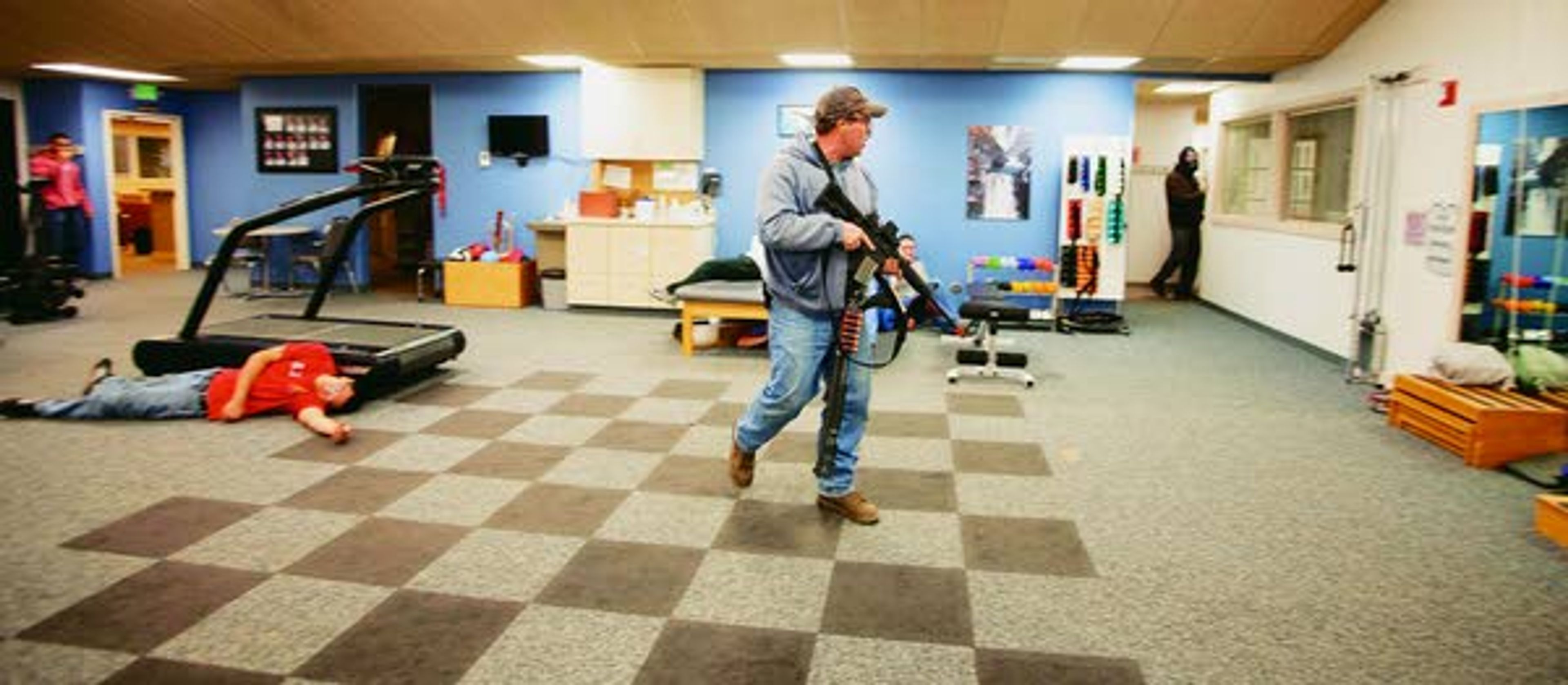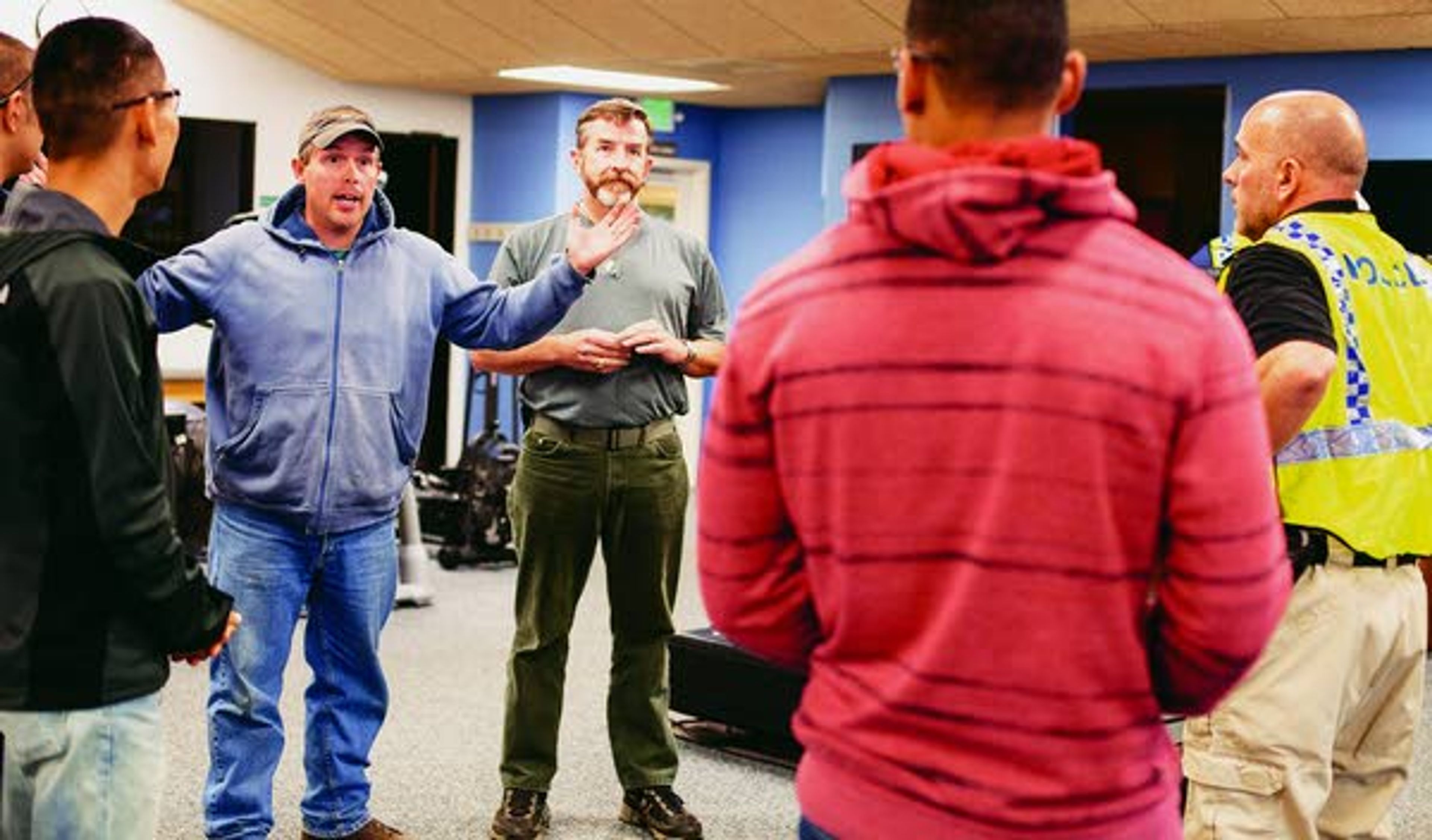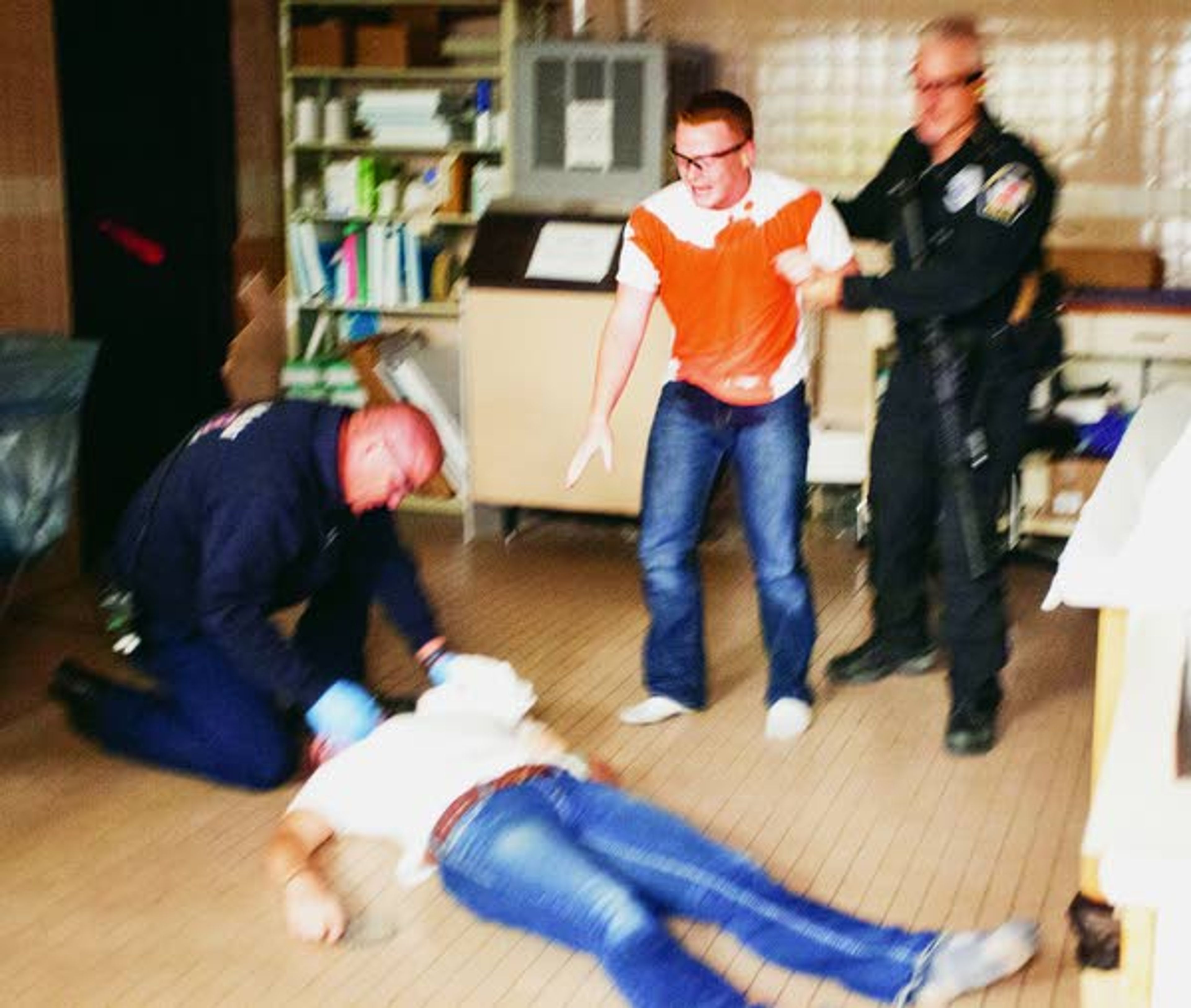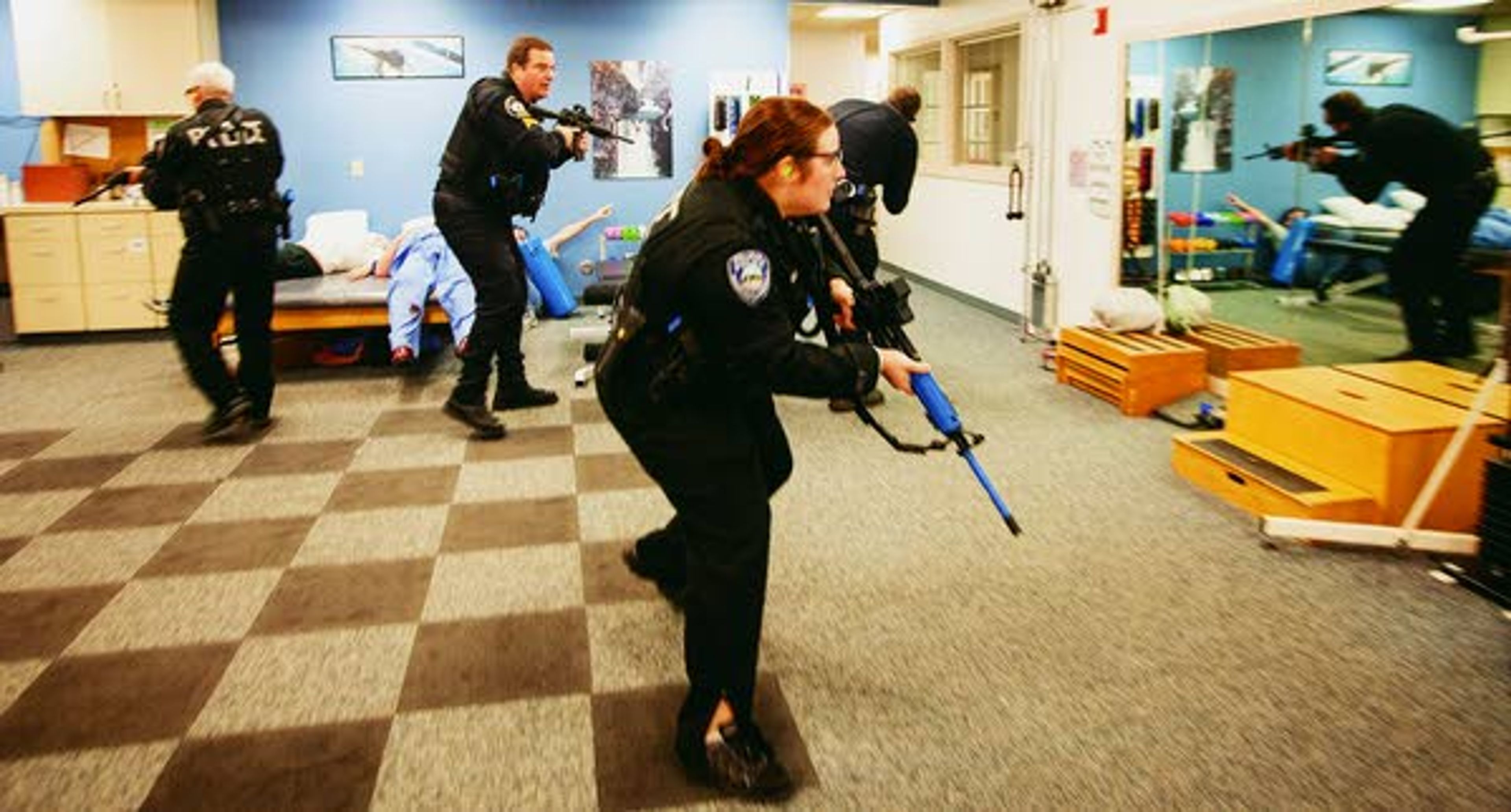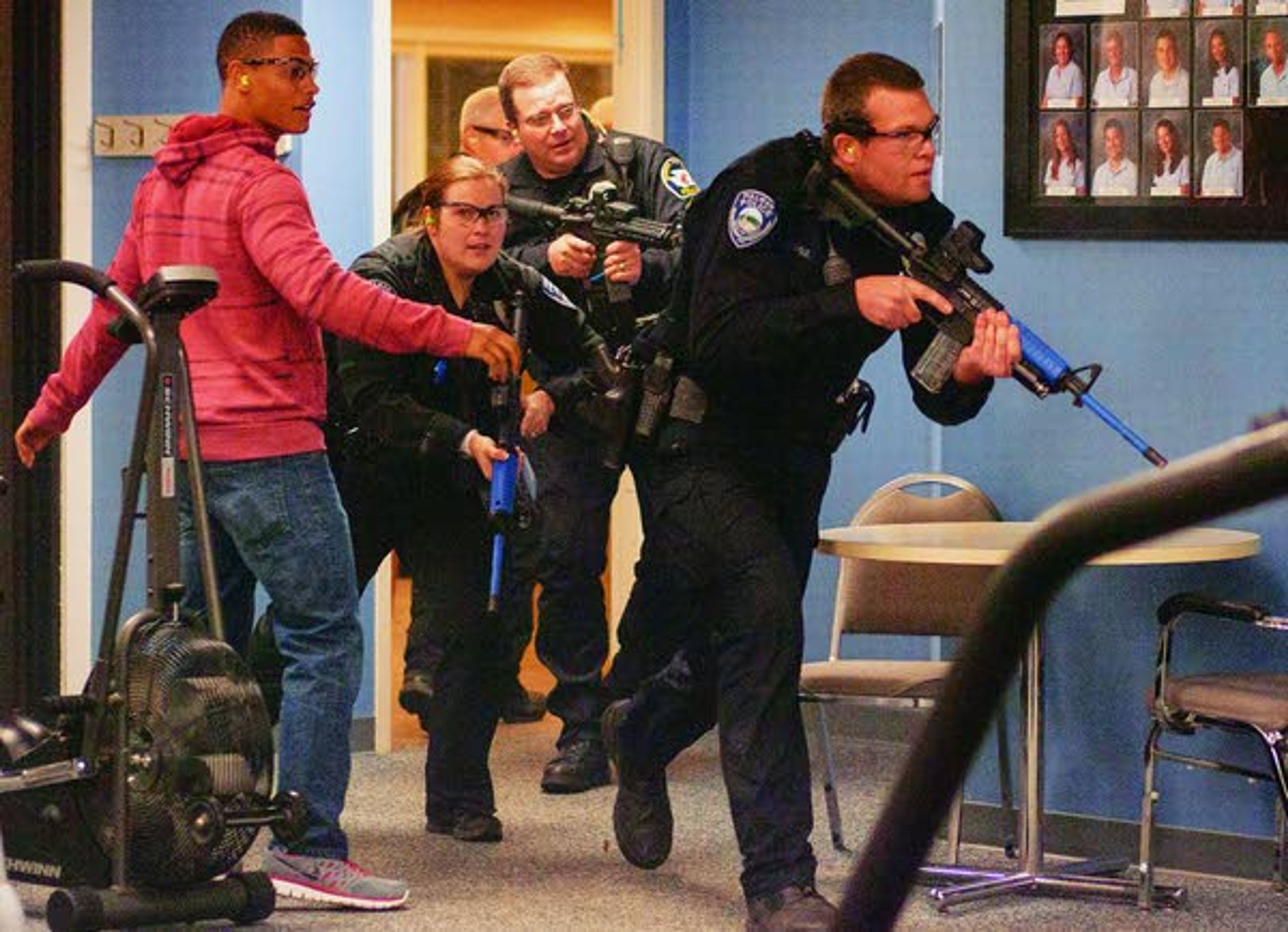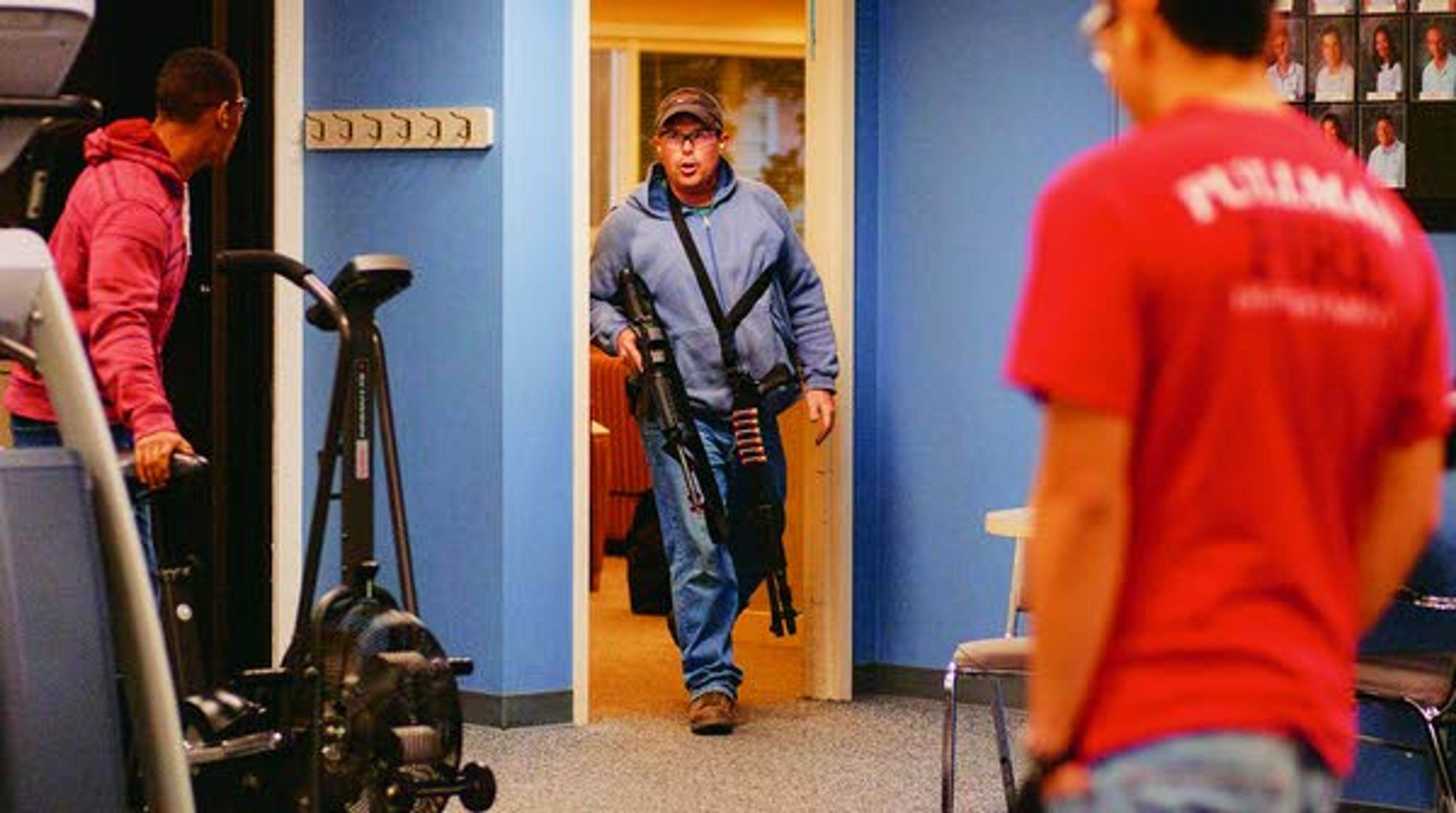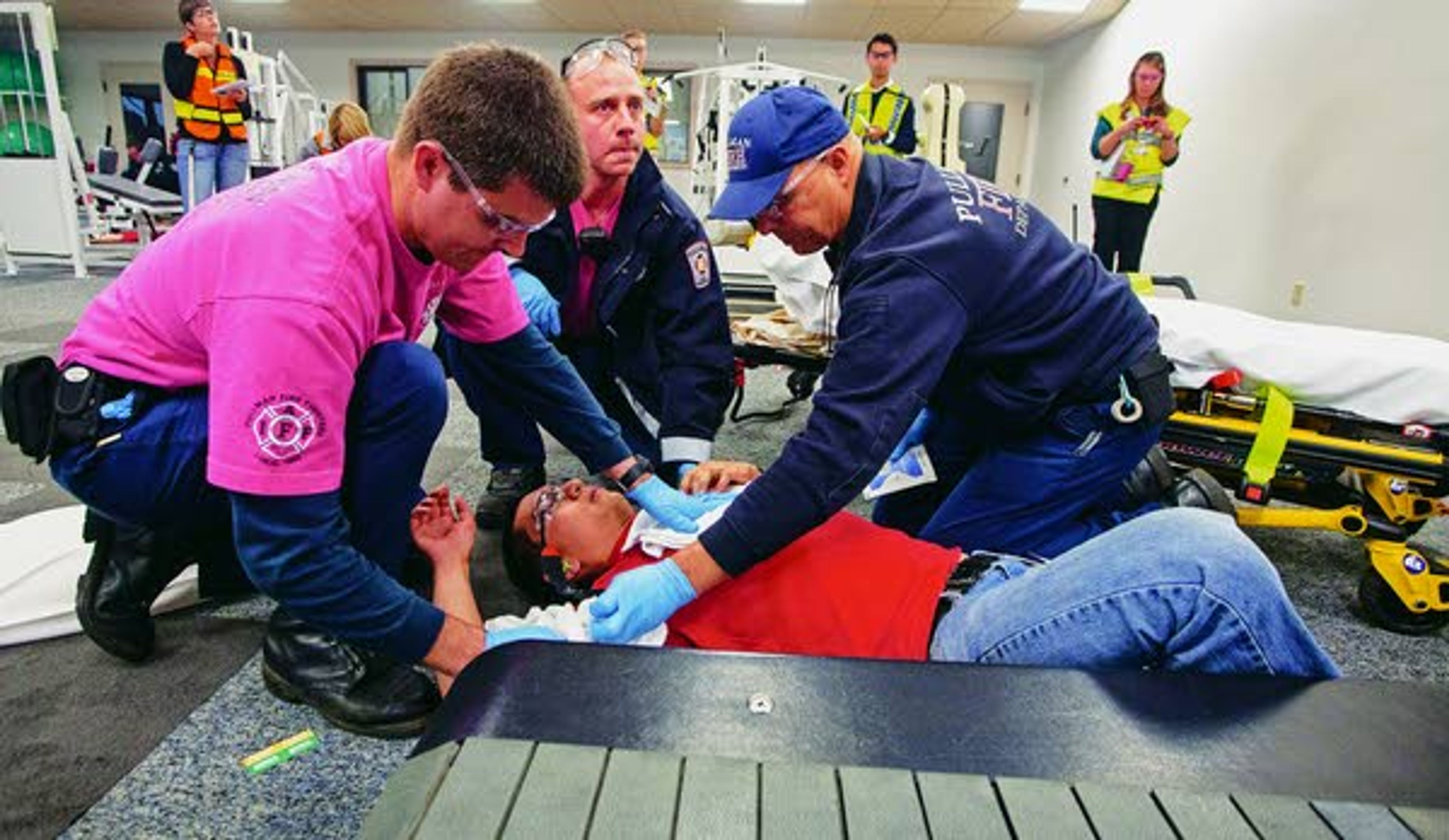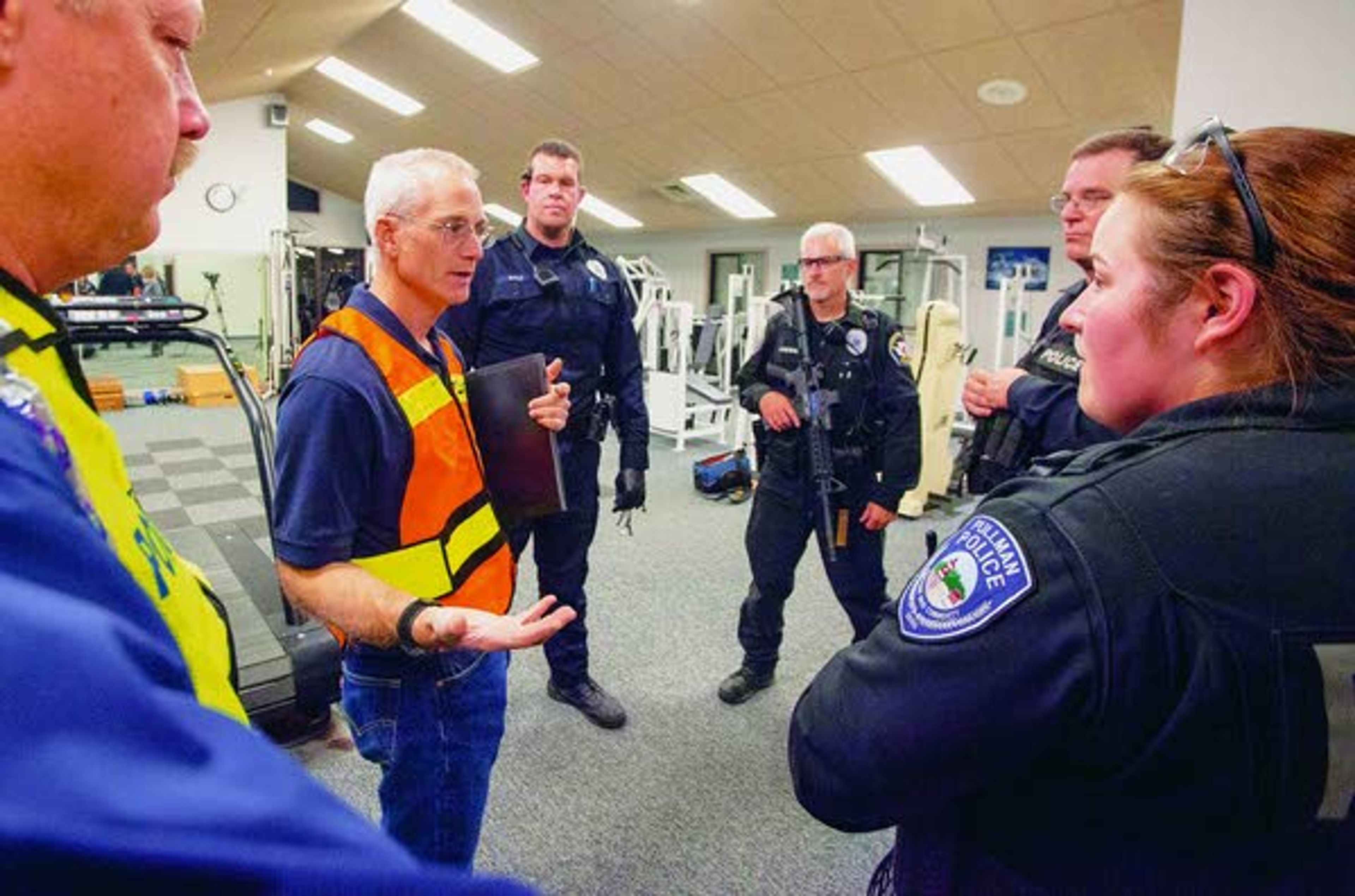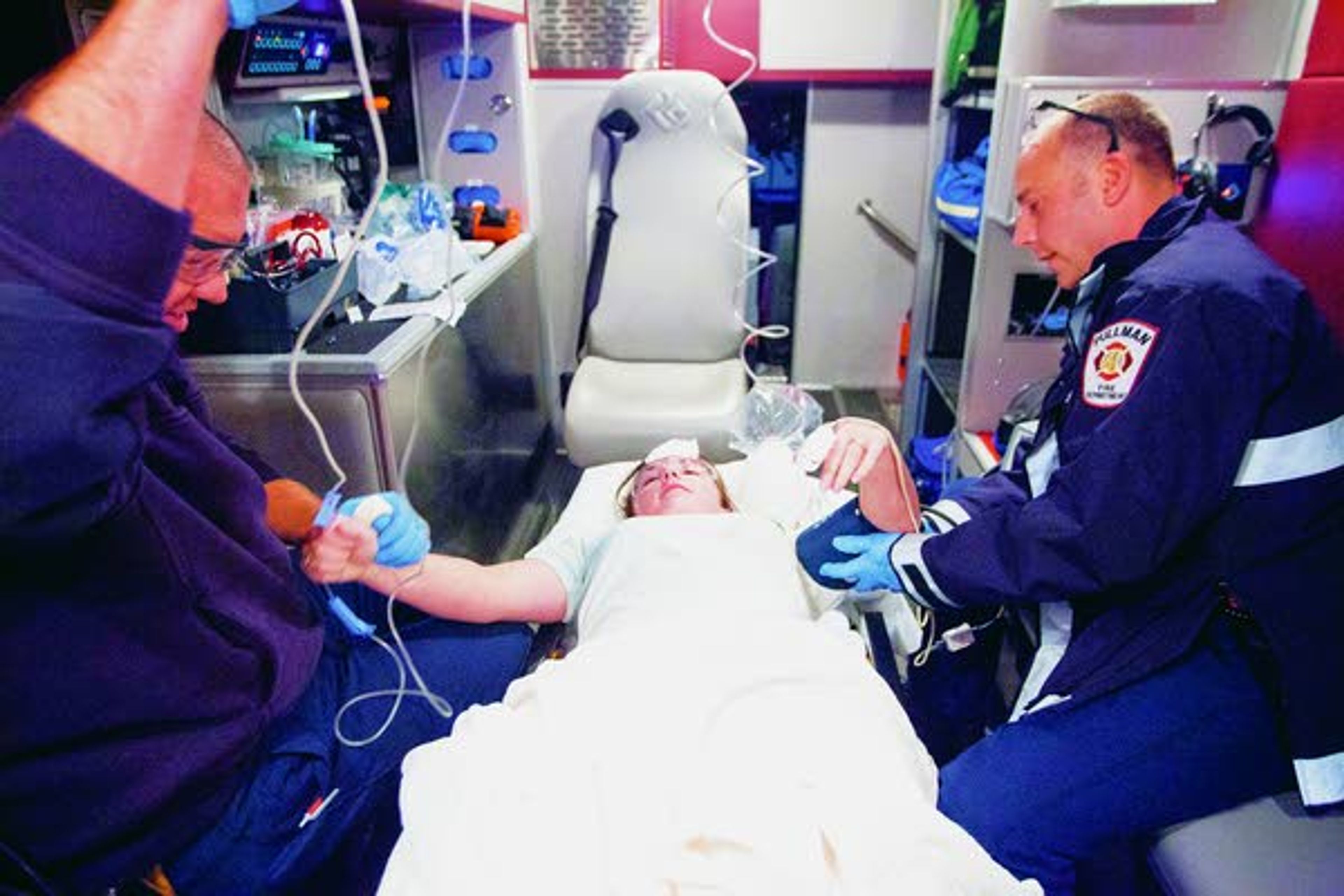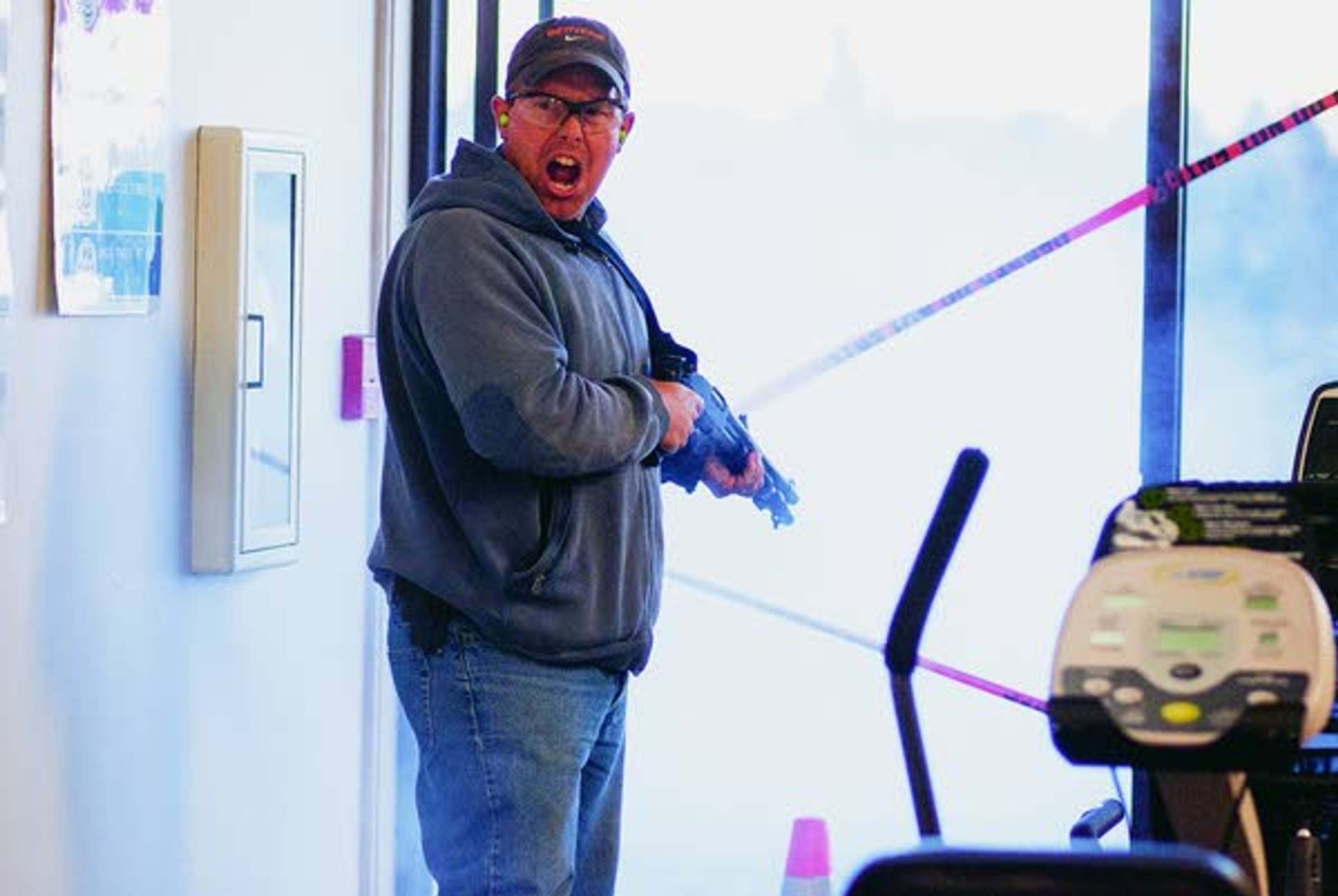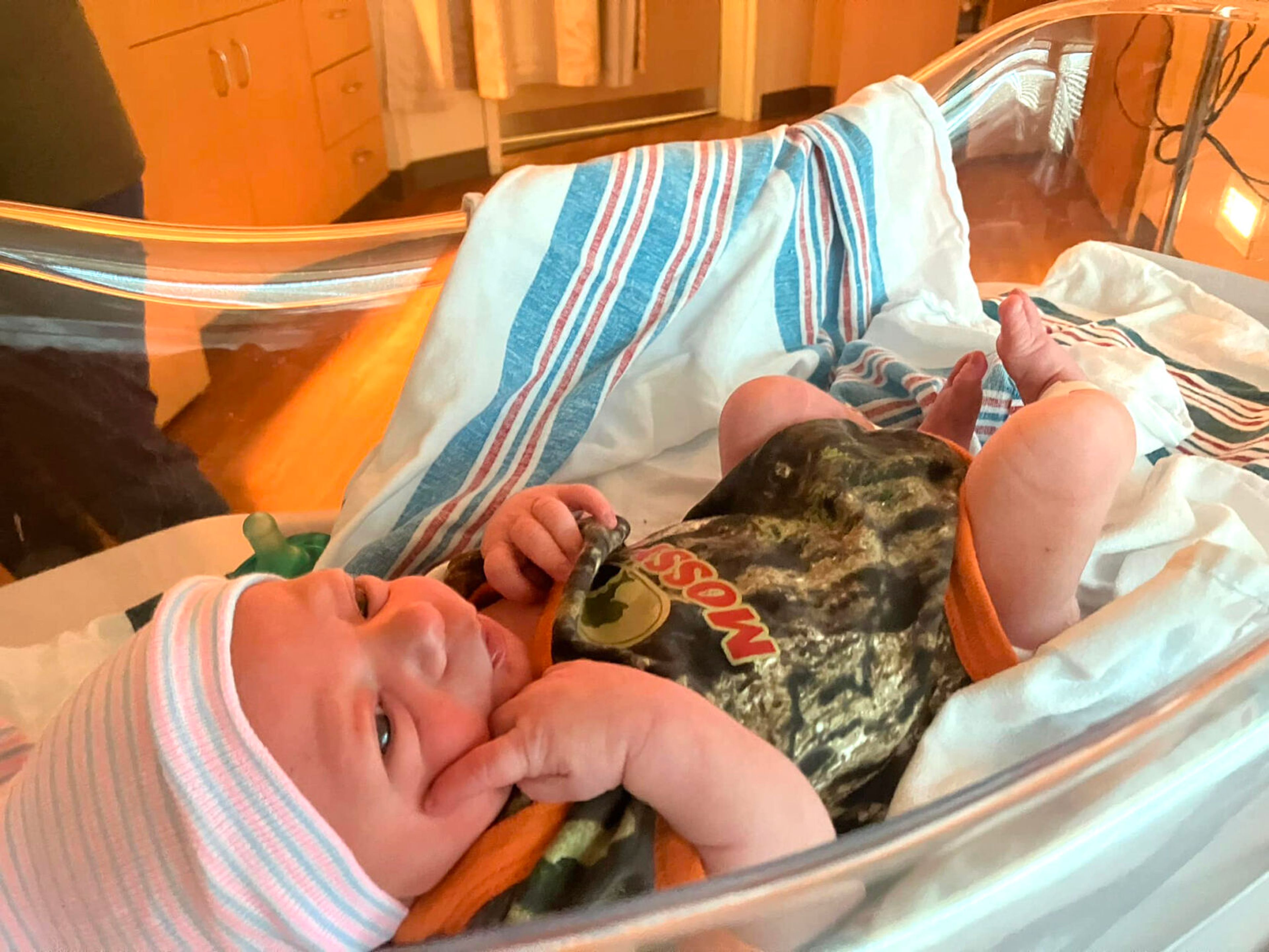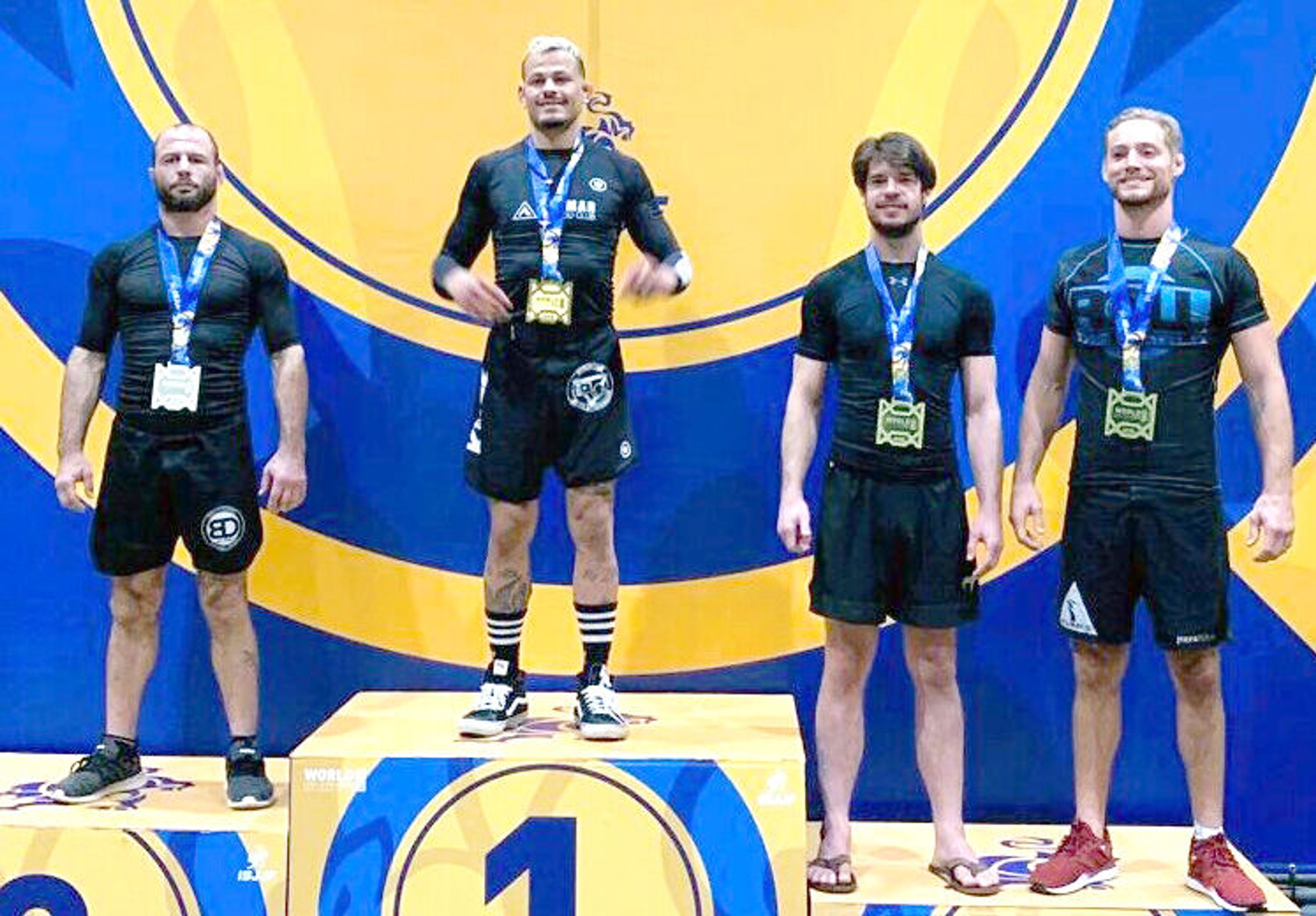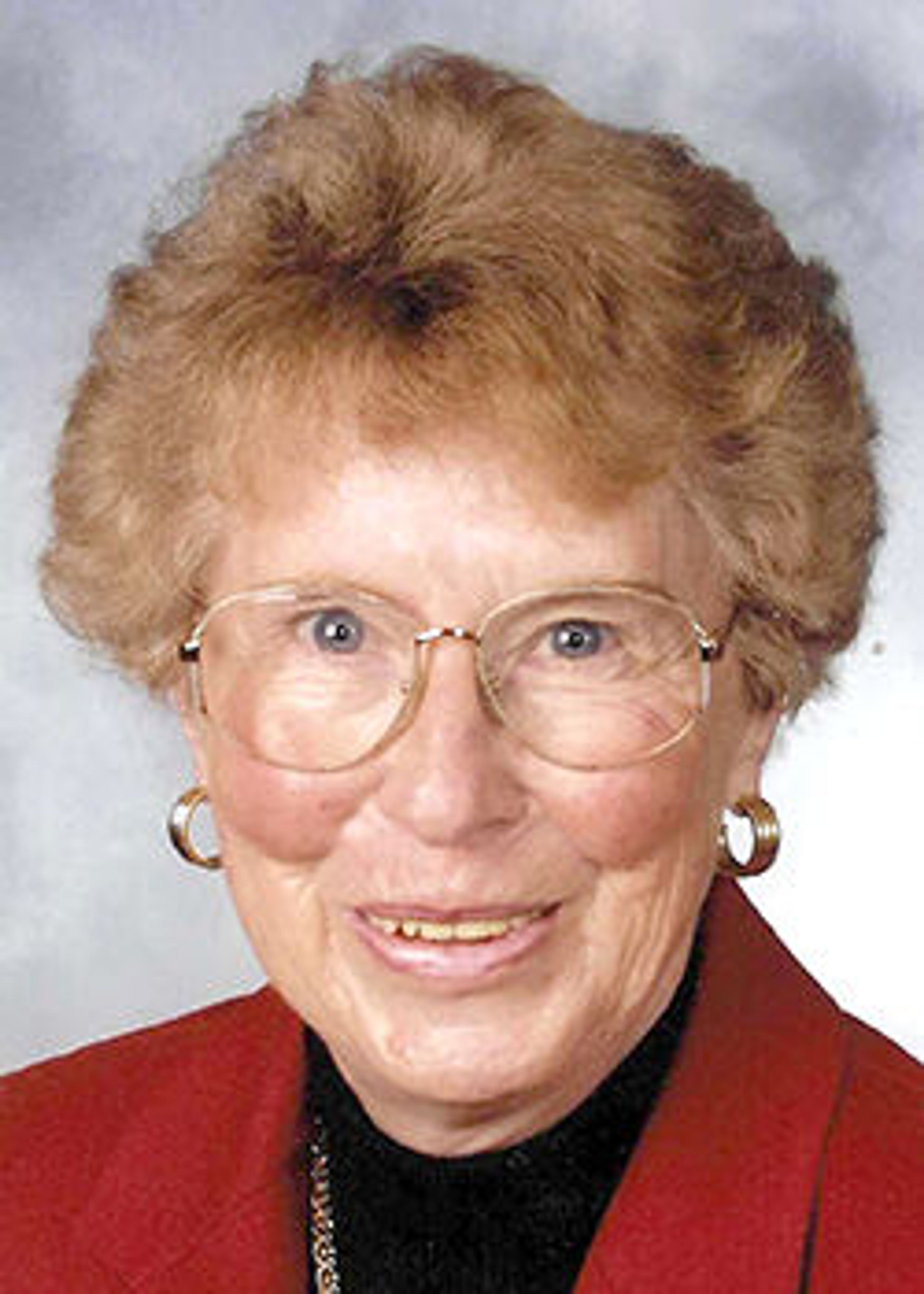'Shots' fired for simulation
Police, fire and hospital participate in active shooter drill
The therapy room in Summit Therapy and Health Service in Pullman was a scene of chaos Sunday evening as multiple law enforcement agencies participated in an active shooter drill organized by Pullman Regional Hospital.
Aaron Breshears, firearms instructor for Pullman Police Department, acted as the shooter, simulating an angry boyfriend looking for his girlfriend, Sarah, an employee at Summit Therapy who he believes is cheating on him.
"A lot of them (active shooting incidents) stem from domestic violence and the tipping point in mental illness, and they just go crazy," Breshears said.
Breshears entered the front lobby, demanding to know where Sarah was and grew increasingly agitated when the receptionist wouldn't tell him. He pulled a silver .357 revolver from his pocket and fired four quick shots before entering the therapy room, where several Summit Therapy staff members and other volunteers were pretending to be medical professionals and patients.
Breshears yelled again for Sarah to come out and switched to an AR-15 semi-automatic rifle, firing blanks with the gun pointed to the ground. Pretend victims screamed and fell to the ground like dominoes as bullet casings with crimped tips popped out of the gun and hit the carpet. Growing angrier, Breshears pulled out a 12-gauge shotgun and fired black powder blanks out of an open outside-facing door, causing the loud gunshots to echo across Bishop Boulevard.
About four minutes after Breshears had begun shooting, Pullman Police and Washington State University Police officers entered the building, found the shooter and secured the area before calling EMTs from the Pullman Fire Department about six minutes later.
"It was kind of scary, because I felt like it happened really slow, which is alarming, because if that were to really happen, especially being the place that I work, because that would be a real scenario for us, it's like 'Oh, well, we would all be dead.' It took them so long to get here, but it is a drill and I get that and that's why they practice, but still it was scary to see how the system works," said Ashley Yates, Summit Therapy aide and volunteer victim.
After securing the area, police officers worked to keep the victims calm as they screamed for help while waiting for the EMTs. Some placed pressure on victims' fake gunshot wounds, while others kept an eye on the building.
"The police officers didn't really seem to know how to respond, and so then everybody's yelling at them more and it seemed like they didn't quite know how to handle a first response situation quite as well," Yates said.
Pullman Police Commander Chris Tennant said while he thought communication between police and the fire department could have been better, police officers did their jobs right in securing the building first.
"It is very hard as a human being to pass up people that need aid, and you want to help them, but that's not their role. And so it was good to see that interaction and to put those people, even though it's an exercise, into that type of element and that they perform the way they're supposed to," Tennant said.
After the drill, Breshears said the delay in response for the police and fire department is an accurate simulation of what would happen in a real life active shooter situation. First, someone must call 911 and then the dispatcher has to gather all of the necessary information to decide who to dispatch. When police are called, he said, they could be anywhere in the city and then must coordinate who will respond, essentially formulating the plan en route.
Breshears said police incorporated that real-life delay into the drill, holding the officers involved in the drill back for several minutes before letting them in the building.
"If you were at Dissmore's when this call came out or you were at Schweitzer Engineering or the airport, you would not get here immediately. There is going to be a delay before you get here, and unfortunately that is when something or someone as an active shooter can do so much damage," Breshears said.
The second delay in getting EMTs to the scene, he said, is because police officers have to make sure the building is safe before calling in medical aid.
"There's all of these systemic delays within the system, and we try to be as efficient as possible, but sometimes there's nothing you can do about the delay," Breshears said.
When EMTs arrived, they labeled each victim based on the severity of their injuries with red, yellow and green tags, from immediate to minor injuries, respectively. The few victims who were labeled as dead received black tags. Victims needing immediate care were then transported to Pullman Regional Hospital.
Alison Weigley, hospital community relations coordinator, said she thought the drill went well and provided the practice needed by Summit Therapy staff members, law enforcement officers and first responders.
"It's unfortunate that situations like this can happen, and they do happen, and they happen in small communities, so it's really good to be prepared," Weigley said.
Weigley said the hospital conducts similar preparation drills on an annual basis. Other participating agencies were Whitman County Fire District 12 and Whitcom 911.
Meredith Metsker can be reached at (208) 883-4628, or by email to mmetsker@dnews.com. Follow her on Twitter: @MeredithMetsker
